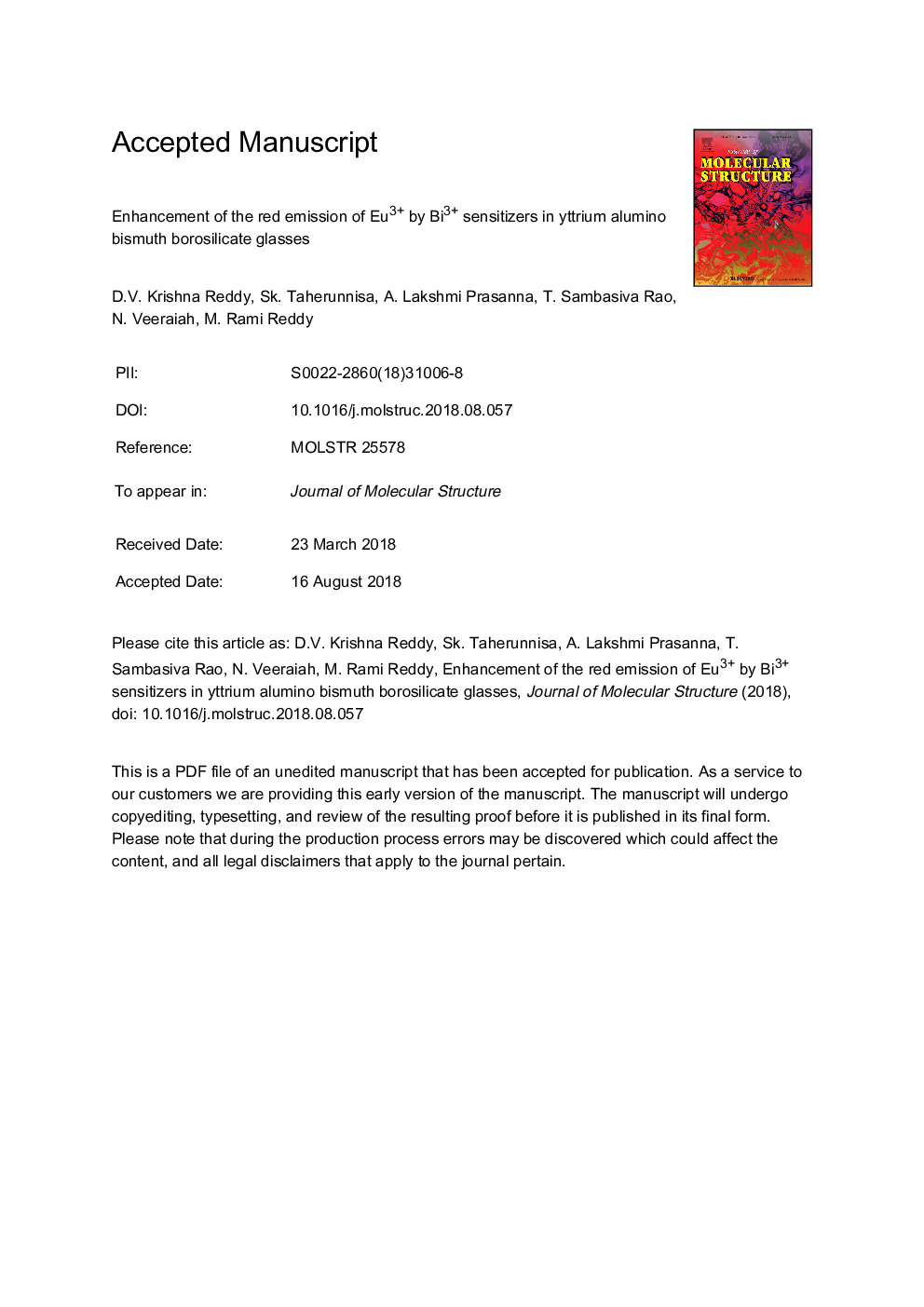| کد مقاله | کد نشریه | سال انتشار | مقاله انگلیسی | نسخه تمام متن |
|---|---|---|---|---|
| 10135011 | 1645656 | 2019 | 49 صفحه PDF | دانلود رایگان |
عنوان انگلیسی مقاله ISI
Enhancement of the red emission of Eu3+ by Bi3+ sensitizers in yttrium alumino bismuth borosilicate glasses
دانلود مقاله + سفارش ترجمه
دانلود مقاله ISI انگلیسی
رایگان برای ایرانیان
موضوعات مرتبط
مهندسی و علوم پایه
شیمی
شیمی آلی
پیش نمایش صفحه اول مقاله

چکیده انگلیسی
Trivalent europium ions doped yttrium alumino bismuth borosilicate glasses (YABiBS) of the composition are synthesized by the melt - quenching method. The structural, thermal and spectral properties of the prepared glasses have been investigated by XRD, EDS, FT-IR, DTA, optical absorption, photoluminescence and decay profiles. XRD indicated the amorphous nature of the samples. From the DTA traces thermal Parameters like ÎT, S and H are evaluated to verify the thermal stability of the titled glasses. FTIR spectra exhibited bands due to various fundamental vibrational units of borate and silicate groups. The optical absorption spectra exhibited the bands due to 7F0 â 5G4, 7F0 â 5L6, 7F0 â 5D2, 7F0 â7F6, and 7F1 â 7F6 transitions of Eu3+ ions. In addition the absorption spectra also exhibited a band due to 1S0 â 1P1 transition of Bi3+ ions. From the absorption spectra, the optical band gap and Urbach energies and also nephelauxetic ratios were evaluated. The emission spectra (excited at 392â¯nm) exhibited five luminescence bands at 577, 590, 612, 651 and 700â¯nm assigned to 5D0 â 7F0, 5D0 â 7F1, 5D0 â 7F2, 5D0 â 7F3, and 5D0 â 7F4 transitions of Eu3+ ions, respectively. The absorption and emission spectra were characterized using Judd-Ofelt (J-O) theory and radiative parameters viz., radiative transition probability (AR), branching ratio (βR), and luminescence quantum efficiency (η), radiative life time (Ï), stimulated emission cross-section (ÏPE) were evaluated. The values of radiative parameters are found to be the highest for the transition 5D0â7F2 of 0.6mol% Eu3+ doped YABiBS glass (BE0.6). The co-doping of Bi3+ ions (10.0mol %) caused a substantial enhancement (nearly three times) in the intensity of this red emission. These results suggested the energy transfer between Bi3+ ions and Eu3+ ions. The energy transfer efficiency has been explained in terms of structural modifications taking place in the glass network.
ناشر
Database: Elsevier - ScienceDirect (ساینس دایرکت)
Journal: Journal of Molecular Structure - Volume 1176, 15 January 2019, Pages 133-148
Journal: Journal of Molecular Structure - Volume 1176, 15 January 2019, Pages 133-148
نویسندگان
D.V. Krishna Reddy, Sk Taherunnisa, A. Lakshmi Prasanna, T. Sambasiva Rao, N. Veeraiah, M. Rami Reddy,